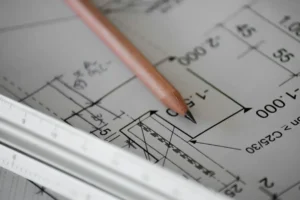Understanding the unique roles and contributions of drafters and architects within the construction and design industry is essential for those considering a career in these fields. This article will explore the distinct differences between these professions, from education and skill sets to responsibilities and career paths.
Educational Paths

Architectural Education and Licensing
To pursue a career as an architect, one must undertake a rigorous educational journey, starting with obtaining a professional degree in architecture from an accredited institution. This is followed by completing an internship under a licensed architect and passing the Architect Registration Examination (ARE). The curriculum for architects covers a wide range of topics, including design theory, history, project management, and the technical aspects of building and construction.
Drafting Education and Certification
Drafters, or CAD technicians, usually require a diploma, certificate, or associate’s degree in drafting from a technical school or community college. Their education focuses on mastering computer-aided design (CAD) software, which is pivotal in creating technical drawings and plans.
Roles and Responsibilities

The Creative Vision of Architects
Architects are responsible for the overall concept and design of buildings and structures. They collaborate with clients to develop visions, create design proposals, and ensure that these proposals meet all legal and safety requirements. Furthermore, architects oversee the project from conception to completion, always considering aesthetics, functionality, and environmental impact.
The Technical Precision of Drafters
Drafters use CAD software to transform the designs of engineers and architects into technical drawings and detailed plans. These drawings provide comprehensive specifications for building components, such as dimensions, materials, and construction procedures, specializing in mechanical, electrical, or civil drafting fields.
Skill Sets and Expertise
Architects boast a broad skill set that includes design, engineering basics, problem-solving, project management, and communication. They must also be knowledgeable about building codes, zoning laws, and construction standards. In contrast, drafters possess specialized skills in CAD software and technical drawing, focusing on detail, precision, and the ability to translate conceptual ideas into detailed, actionable plans.
Career Path and Advancement
Architects’ career progression often involves moving from intern positions to senior roles, partnerships in firms, or establishing their practices. They tend to take on increasingly more extensive and complex projects over time. Drafters can advance by gaining expertise in more complex drafting disciplines, transitioning into design and engineering roles with further education, or specializing in CAD system management for larger projects or firms.
Conclusion
Architects and drafters play critical roles in designing and constructing buildings and structures, with each profession contributing unique skills and perspectives. Understanding the differences between these roles is crucial for anyone considering a career in these fields, offering a pathway to fulfilling professional opportunities in the construction and design industry.


